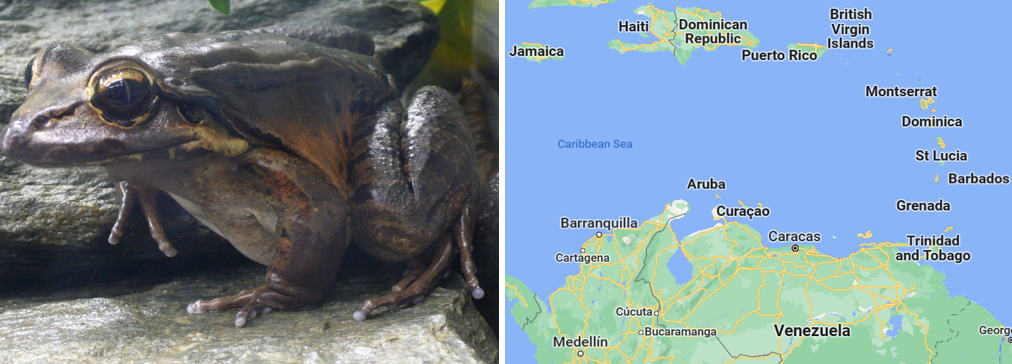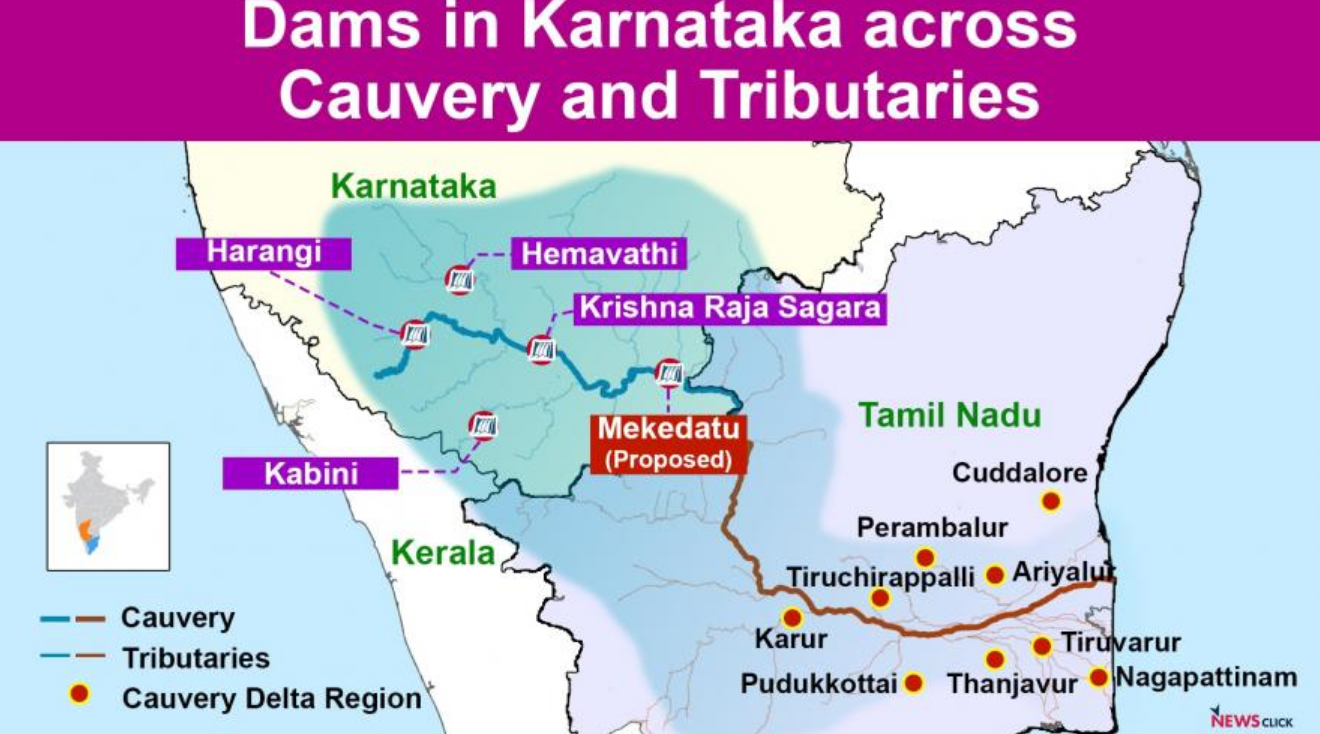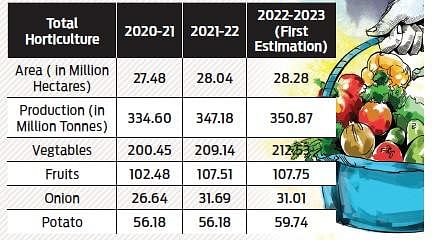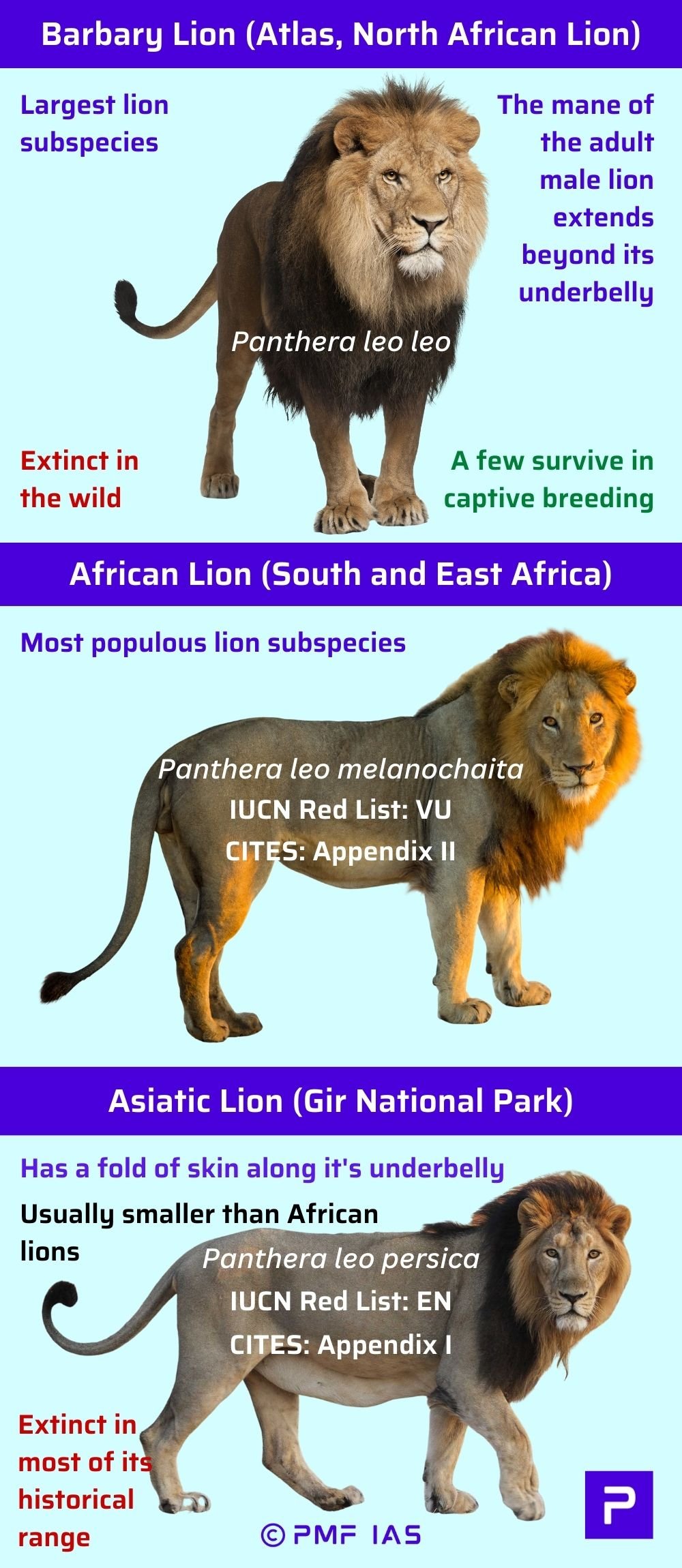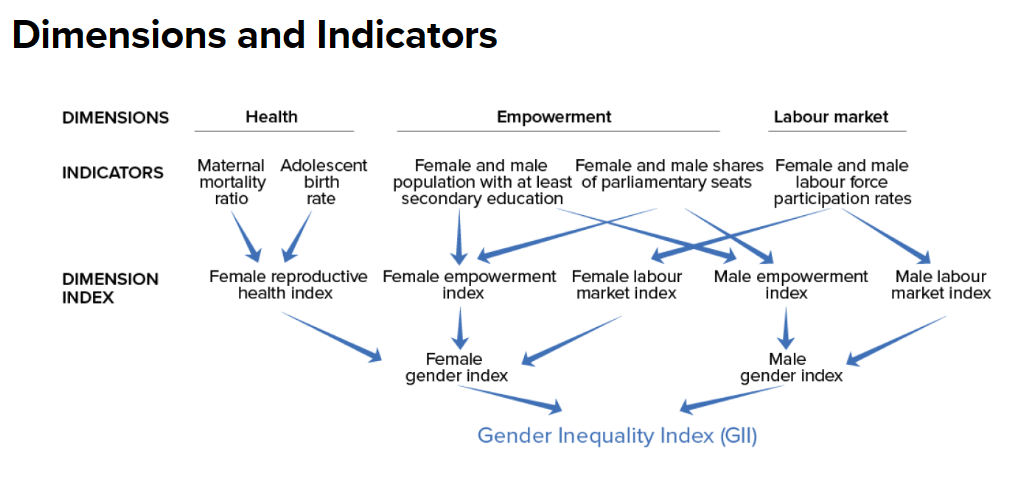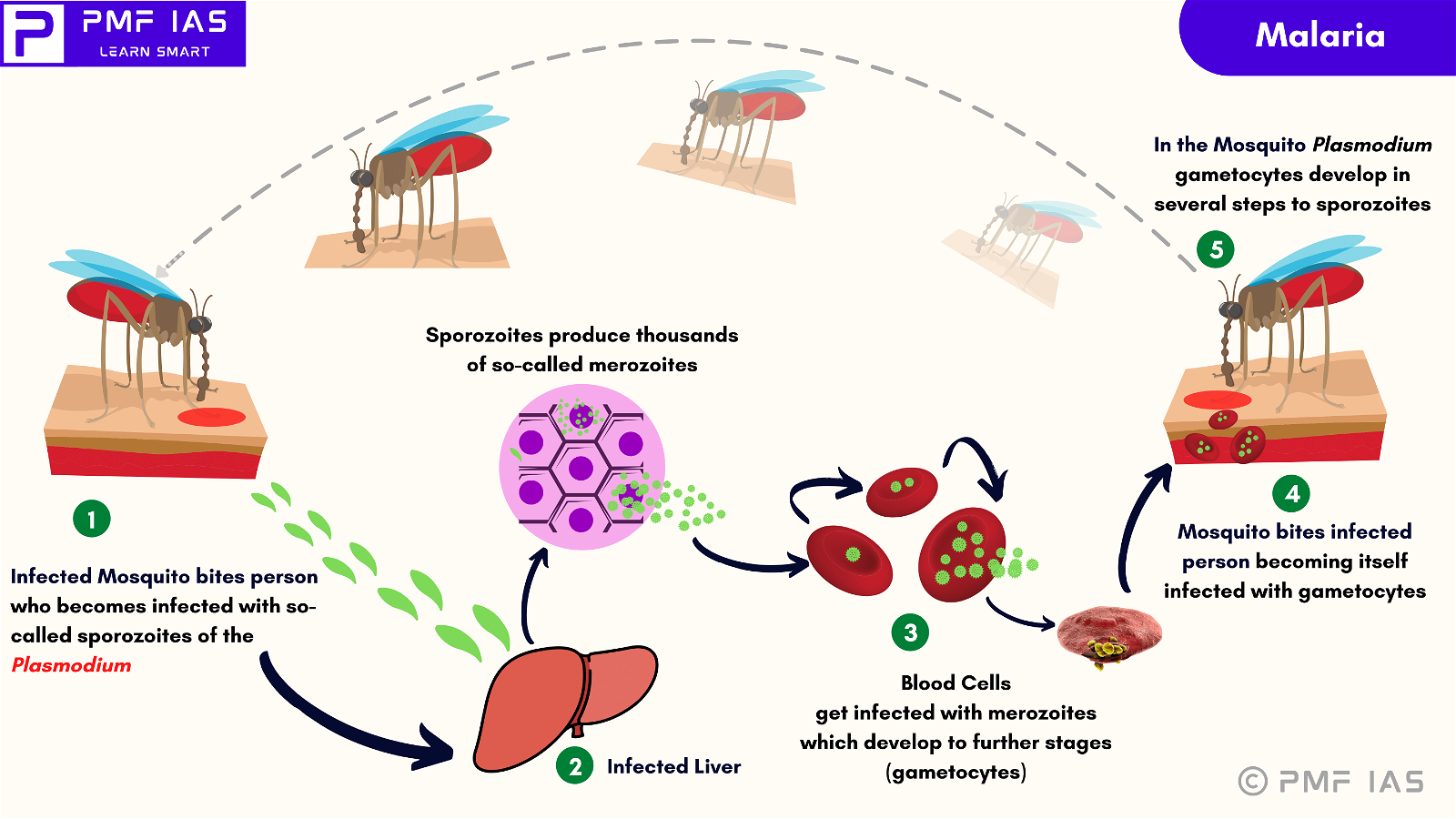
Current Affairs for UPSC Civil Services Exam – March 17-18, 2024
Subscribers of "Current Affairs" course can Download Daily Current Affairs in PDF/DOC
Subscribe to Never Miss an Important Update! Assured Discounts on New Products!
Must Join PMF IAS Telegram Channel & PMF IAS History Telegram Channel
{GS2 – Governance – Laws} Ban on Hookahs in Karnataka
- Context (IE): On February 7, the Karnataka health department issued a notification banning the sale and consumption of hookahs to safeguard public health.
- Consequently, several restaurant owners approached the Karnataka High Court to challenge this notification.
- However, on February 20, the Karnataka government introduced a bill to ban the opening of hookah bars in any location.
- The bill amended the Cigarettes and Other Tobacco Products Act (COTPA) of 2003 to penalise individuals opening hookah bars in the state with,
- It included imprisonment ranging from 1 to 3 years. A fine of up to 1 lakh rupees.
- Notably, Maharashtra, Rajasthan & Tamil Nadu have passed such amendments in the past.
Arguments by the Petitioners
- Firstly, the notification is considered illegal interference because it goes beyond the prohibitions stated in the COTPA.
- According to the petition, the COTPA bans public smoking, advertisement of tobacco products, and sale to minors but does not prohibit hookah smoking.
- As per Section 4 of the COTPA, hookah smoking is allowed in designated smoking areas, making the notification’s restrictions beyond the scope of the law.
- Secondly, the petition argues that the Karnataka health department does not have the authority to issue the notification under the COTPA.
- Thirdly, the notification infringes upon the rights of business owners as guaranteed by Article 19(1)(g) of the Constitution.
- Article 19(1)(g) grants citizens the right to practise any profession or to carry on any occupation, trade or business.
Arguments by the Government
- The “Public health and sanitation; hospitals and dispensaries” falls under Entry 6 of the State List in the 7th Schedule of the Constitution. So, the state government asserts the authority to issue the notification.
- The government cited Article 162 of the Constitution, granting state governments “executive power” in areas where the legislature has authority to enact laws.
- The government also cited Article 47 of the Constitution, which mandates the government to strive for the prohibition of consuming intoxicating drinks and harmful drugs.
{GS2 – Governance – Laws} Citizenship Amendment Act, 2019
- Context (IE I TH I IE): The Ministry of Home Affairs (MHA) notified the Citizenship Amendment Rules, 2024, enabling the implementation of the Citizenship Amendment Act (CAA), 2019.
- The Act amended the Citizenship Act of 1955.
- The two parliamentary committees (committee on subordinate legislation) had sought MHA’s help in framing the rules that will govern the CAA.
- If the government does not make rules and regulations, a law or parts of it will not get implemented.
- The Benami Transactions Act of 1988 is an example of a complete law remaining unimplemented in the absence of regulations.
- The government has previously taken steps to address the plight of refugees, including amendments to the Citizenship Rules in 2004 and notifications in 2014, 2015, 2016, and 2018.
Committee on Subordinate Legislation
|
Rules Issued by the Government Concerning the CAA
CAA Rules 2024
- The application process for citizenship has been made under Section 6B of the Citizenship Act, 1955.
- Applicants need to prove their country of origin, religion, date of entry into India, and knowledge of an Indian language to qualify for Indian citizenship.
- The GoI no longer requires applicants to provide language proficiency certificates for languages listed in the Eighth Schedule of the IC.
- Now, a declaration to that effect and being able to speak the language will be enough.
Proof of Country of Origin
- Relaxed requirements allow various documents, including:
- Birth or educational certificates,
- Identity documents,
- Licenses,
- Land records, or
- Any document proving previous citizenship of- Pakistan, Bangladesh, Afghanistan.
- “Any document” showing that one of the applicant’s parents, grandparents, or even great-grandparents was from one of these countries would suffice to prove their nationality.
Date of Entry into India
- Applicants can provide 20 different documents as proof of entry into India, including visas, residential permits, census slips, driving licenses, Aadhaar cards, ration cards, government or court letters, birth certificates, and more.
- A certificate issued by an elected member of a local body would be enough instead of a visa.
Mechanism for Implementation of Rules
- The MHA has assigned the task of processing citizenship applications under the CAA to the Postal Department and Census officials under the GoI.
- Central security agencies will conduct background and security checks like the Intelligence Bureau.
- Final decisions on applications will be made by empowered committees led by the Director (Census Operations) in each State.
- These committees will include officials from various departments, including the IB, Postal Dept, State or National Informatics Centre, and representatives from the State government’s Department of Home and Divisional Railway Manager.
- District-level committees, headed by the Superintendent of the Department of Post, will sift through applications, with a representative from the District Collector’s office as an invitee.
Processing of Applications
- The Empowered Committee and District Level Committee (DLC), instituted by the Centre, will process citizenship applications, bypassing state control.
- DLC will receive applications, and the Empowered Committee, headed by the Director (Census Operations), will make the final decision.
Objective of CAA, 2019
- It seeks to make foreign illegal migrants of certain religious communities coming from Afghanistan, Bangladesh, and Pakistan eligible for Indian citizenship.
- The contentious law fast-tracks citizenship to undocumented immigrants.
Features of CAA, 2019
Illegal Immigrants
- Definition: It defines an illegal migrant as a foreigner:
- Who enters India without a valid passport or travel documents or
- Stays beyond the permitted time.
- The Act prohibits illegal migrants from acquiring Indian citizenship.
- Hindus, Sikhs, Buddhists, Jains, Parsis and Christians from Afghanistan, Bangladesh and Pakistan who entered India on or before December 31, 2014, will not be treated as illegal migrants.
The Foreigners Act, 1946 and the Passport (Entry into India) Act, 1920
- It also exempts above category of people from the Foreigners Act of 1946 and the Passport (Entry into India) Act of 1920 so that they can receive this benefit.
- The 1920 Act mandates foreigners to carry passports, while the 1946 Act regulates the entry and departure of foreigners in India.
Before CAA, 2019
|
Citizenship by registration or naturalisation
- The Act allows a person to apply for citizenship by registration or naturalisation if the person meets certain qualifications.
- For instance, if a person resides in India for a year and if one of his parents is a former Indian citizen, he may apply for citizenship by registration.
- It creates an exception for Hindus, Sikhs, Buddhists, Jains, Parsis, and Christians from Afghanistan, Bangladesh, and Pakistan regarding this qualification.
- For these groups, the 11-year requirement (by naturalisation) will be reduced to five years.
- On acquiring citizenship:
- Such persons will be deemed to be citizens of India from the date of their entry into India and
- All legal proceedings with respect to their illegal migration or citizenship will be closed.
Exception for Certain regions in the Country
- These provisions of citizenship will not apply to the tribal areas of Assam, Meghalaya, Mizoram, and Tripura, included in the Sixth Schedule to the IC.
- These tribal areas include Karbi Anglong (in Assam), Garo Hills (in Meghalaya), Chakma District (in Mizoram), and Tripura Tribal Areas District.
- It will not apply to the “Inner Line” areas:
- Indian visits to these areas are regulated through the Inner Line Permit. Currently, this permit system applies to Arunachal Pradesh, Mizoram, Nagaland and Manipur.
Inner Line Permit (ILP)
|
Cancellation of registration of OCIs
- The Act adds one more ground for cancelling registration:
- If the OCI has violated the provisions of the Act or any other law as notified by the GoI.
- Orders for cancelling OCI should not be passed until the OCI cardholder is given an opportunity to be heard.
|
Issues related to the Amendment Act
Violation of Article 14 of IC
- Article 14 guarantees equality to all persons, including citizens and foreigners.
- It only permits laws to differentiate between groups of people if the rationale for doing so serves a reasonable purpose.
- It prohibits class legislation but permits reasonable classification.
- The Bill provides differential treatment to illegal migrants based on:
- Their country of origin,
- Their religion,
- Date of entry into India, and
- Place of residence in India.
Country of Origin
- It classifies migrants based on their country of origin to include only Afghanistan, Pakistan and Bangladesh.
- The Statement of Objects and Reasons (SoR) states that Afghanistan, Pakistan and Bangladesh have a state religion, which has resulted in religious persecution of minority groups.
- While millions of citizens of undivided India were living in Pakistan and Bangladesh, no reason has been provided to explain the inclusion of Afghanistan.
- It is not clear why migrants from these countries are differentiated from migrants from other neighbouring countries such as Sri Lanka (Buddhist state religion) and Myanmar (primacy to Buddhism).
- Sri Lanka has had a history of persecution of a linguistic minority in the country, the Tamil Eelams.
- Myanmar has had a history of persecution of a religious minority, the Rohingya Muslims.
- There have been reports of both Tamil Eelams and Rohingya Muslims seeking refuge in India.
Religious persecution of minorities in Pakistan, Afghanistan, Bangladesh
- It may be argued that other religious minorities in these countries face religious persecution and may have illegally migrated to India.
- For e.g. there have been reports of persecution of Ahmadiyya Muslims in Pakistan (who are considered non-Muslims in Pakistan) and the murder of atheists in Bangladesh.
- It is unclear why illegal migrants from only six specified religious minorities have been included in the Bill.
Date of Entry
- It is also unclear why there is a differential treatment of migrants based on their entry date into India, i.e., whether they entered India before or after December 31, 2014.
Place of residence in India
- The bill also excludes illegal migrants residing in areas covered by the Sixth Schedule, that is, notified tribal areas and also excludes the Inner Line Permit areas.
- Once an illegal migrant residing in these areas acquires citizenship, he will be subject to the same restrictions as other Indian citizens.
Wide discretion to the government to cancel OCI registration
- Giving the GoI the power to prescribe the list of laws whose violation results in cancellation of OCI registration may amount to an excessive delegation of powers by the legislature.
- The SC has held that while delegating powers to an executive authority, the legislature must prescribe a policy, standard, or rule for their guidance.
- This will set limits on the authority’s powers and not give them arbitrary discretion to decide how to frame the rules.
- The SC has held that while delegating powers to an executive authority, the legislature must prescribe a policy, standard, or rule for their guidance.
- The Bill does not provide any guidance on the nature of laws that the GoI may notify.
- The powers given to the GoI may go beyond the permissible limits of valid delegation.
Hampering Bilateral Ties
- It throws light on the religious oppression that has happened and is happening in these three countries and, thus, may worsen our bilateral ties with them.
Issues in the North-East
- It intersects with Section 6A of Citizenship Act, 1955, which determines citizenship criteria in Assam.
- It contradicts the Assam Accord of 1985, which states that illegal migrants, irrespective of religion, heading in from Bangladesh after 25th March 1971 would be deported.
- There are an estimated 20 million illegal Bangladeshi migrants in Assam, and they have inalienably altered the demography of the state.
|
Secularism and Social Cohesion
- Religion as a criterion for citizenship eligibility has raised broader concerns about its impact on secularism and social cohesion in India.
- It undermines the secular principles upon which the Indian state was founded and could exacerbate communal tensions.
Violates Federal Structure
- Prior to these Rules, an application seeking citizenship was to be made to the district collector concerned.
- Now, the application of those seeking the benefit of the CAA is to be made to the empowered committee formed by the GoI.
CAA, 2019 and National Register of Citizens (NRC)
- The CAA, followed by a country-wide compilation of the NRC, will benefit non-Muslims excluded from the proposed citizens’ register, while excluded Muslims will have to prove their citizenship.
National Register of Citizens (NRC)
National Population Register (NPR)
|
Arguments in Support of CAA
- Cross-border migration between India, Pakistan, Afghanistan, and Bangladesh has been a longstanding issue, especially for minorities.
- Before India’s partition in 1947, millions from undivided India, representing various religious communities, resided in Pakistan and Bangladesh.
- However, the constitutions of these countries, with state religions, led to persecution and fear among minorities.
- Consequently, many sought refuge in India, even with expired or incomplete travel documents.
- Failure of the Nehru-Liaquat pact: It aimed to protect minorities’ rights post-partition.
- Humanitarian grounds: The CAA provides a life of dignity and rights to religious minorities facing persecution on the grounds of their faith in the theocratic neighbouring states.
- Civilizational ethos: India has been a natural home for persecuted minorities, and the CAA is in line with the nation’s civilizational ethos.
- Reasonable classification: It differentiates based on religion but only to accommodate persecuted religious minorities, which is a reasonable restriction under Article 14.
- National interest: It will deter illegal immigration into India from these specific communities in the future. It will also act as a bulwark against infiltration from designated Muslim-majority nations.
- The present legal process of acquiring Indian citizenship by any foreigner of any category, as provided in the Citizenship Act-1955, is very much operational.
- The CAA does not amend or alter this legal position in any manner whatsoever.
- Hence, legal migrants of any religion from any country will continue to get Indian citizenship once they fulfil the eligibility conditions already provided in the law for registration or naturalisation.
Doctrine of Reasonable Classification
Essentials of Doctrine of Reasonable Classification
Article 14 and Reasonable Classification
|
GoI’s Previous Initiatives to address the plight of these refugees
- 2004: GOI amended The Citizenship Rules to give district magistrates of certain border districts in Rajasthan and Gujarat the power to grant LTVs and citizenship to such migrants.
- 2010: The MHA asked states and UTs to consider cases for extension of LTVs of specific categories of Pakistani nationals without insisting on the validity of passports.
- Hindus and Sikhs from Pakistan were eligible under this policy, apart from Pakistani women who were married to Indian nationals and were staying in India;
- Widowed or divorced Indian women who were married to Pakistanis; and “cases involving extreme compassion”.
- Grant of LTVs was also considered in the case of originally-Indian Muslim men who went to Pakistan after Partition and returned on valid Pakistani passports and settled in Kerala.
- 2014: The GoI issued a notification allowing the grant of citizenship to Hindu, Sikh, Christian, and Buddhist migrants from Pakistan. Jains and Parsis were not included in this relaxation.
- In 2015 and 2016, the government amended The Passport (Entry into India) Rules and The Foreigners Order exempting Hindus, Sikhs, Buddhists, Jains, Parsis, and Christians from Pakistan, Afghanistan, and Bangladesh from the process of law in case they entered India without a passport or visa.
- 2018: The GOI issued a notification that made these communities eligible for LTVs if they sought Indian citizenship.
- A range of benefits were extended to them — they could get a private job, start a business, admit their children to school, move freely within the state, open a bank account, buy a house, and get a driving licence, PAN, and Aadhaar.
Citizenship and the IC
- Citizenship is listed in the Union List under the IC and thus is under the exclusive jurisdiction of Parliament.
- The Constitution does not define the term ‘citizen’, but details of various categories of persons who are entitled to citizenship are given in Part 2 (Articles 5 to 11).
- These articles of the IC prescribe who will be deemed a citizen of India at the commencement of the constitution.
- Unlike other provisions of the IC, which came into being on January 26, 1950, these articles were enforced on November 26, 1949 itself, when the IC was adopted.
- It does not deal with the problem of acquisition or loss of citizenship after its commencement.
- Article 11 of the IC empowers Parliament to make any provision regarding the acquisition and termination of citizenship and all matters relating to it.
- The parliament enacted the Citizenship Act of 1955 for the acquisition and termination of Indian citizenship.

Citizenship Act, 1955
- Indian citizenship can be acquired through birth, descent, registration, naturalisation, or territorial incorporation.
- The Act does not provide for dual citizenship or dual nationality.
- The act was amended six times: in 1986, 1992, 2003, 2005, 2015, and 2019.
- Through these amendments, Parliament has narrowed down the more comprehensive and universal principles of citizenship based on the fact of birth.
- Moreover, the Foreigners Act places a heavy burden on the individual to prove that they are not a foreigner.
By Birth
- A person born in India on or after January 26, 1950, but before July 1, 1987, is a citizen of India by birth, irrespective of the nationality of his parents.
- A person born in India on or after July 1, 1987, is considered a citizen of India only if either of their parents is a citizen of India at the time of his birth.
- Further, those born in India on or after December 3, 2004, are considered citizens of India only if both of their parents are citizens of India or one of whose parents is a citizen of India and the other is not an illegal migrant at the time of their birth.
- The children of foreign diplomats posted in India and enemy aliens cannot acquire Indian citizenship by birth.
By Registration
- The GoI may, on an application, register as a citizen of India any person (not being an illegal migrant) if he belongs to any of the following categories, namely:-
- A person of Indian origin who is ordinarily resident in India for seven years before making an application for registration;
- A person of Indian origin who is ordinarily resident in any country or place outside undivided India;
- A person who is married to a citizen of India and is ordinarily resident in India for seven years before making an application for registration;
- Minor children of persons who are citizens of India;
- A person of full age and capacity whose parents are registered as citizens of India;
- A person of full age and capacity who, or either of his parents, was an earlier citizen of independent India and is ordinarily resident in India for twelve months immediately before making an application for registration;
- A person of full age and capacity who has been registered as an overseas citizen of India cardholder for five years and who has ordinarily resided in India for twelve months before making an application.
- A person shall be deemed to be of Indian origin if he, or either of his parents, was born in undivided India or in such other territory which became part of India after August 15, 1947.
- All the above categories of persons must take an oath of allegiance before they are registered as citizens of India.
By Descent
- A person born outside India on or after January 26, 1950, but before December 10, 1992, is a citizen of India by descent if there father was a citizen of India at the time of his birth.
- A person born outside India on or after December 10, 1992, is considered a citizen of India if either of his parents was a citizen of India at the time of his birth.
- If a person born outside India or after December 3, 2004,
- Has to acquire citizenship,
- Their parents have to declare that the minor does not hold a passport of another country and
- Their birth is registered at an Indian consulate within one year of birth.
By Naturalisation
- A person can acquire citizenship by naturalisation if they have ordinarily resided in India for 12 years (throughout the 12 months preceding the date of application and 11 years in the aggregate) and fulfils all qualifications in the third schedule of the Citizenship Act.
- By Territorial Incorporation:
- If any foreign territory becomes a part of India, the GOI specifies the persons who, among the people of the territory, shall be the citizens of India.
{GS2 – IR – India-Pak} Operation Meghdoot
- Context (IE): Operation Meghdoot is marking its 40th anniversary on April 13 this year.
- Operation Meghdoot was conducted by the Indian Army to seize control of the Siachen Glacier in Ladakh.
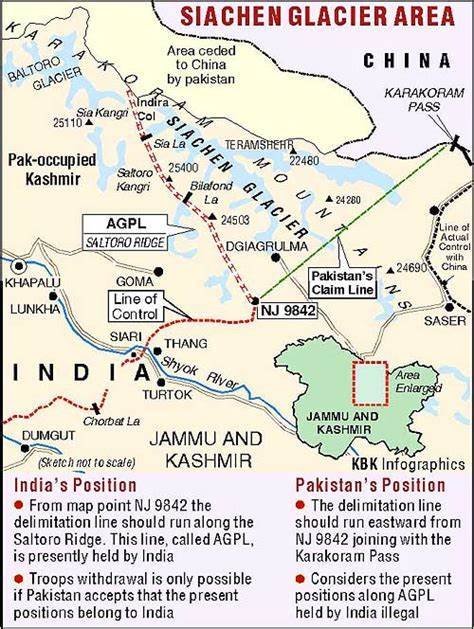
- It took place on April 13, 1984, marking the beginning of the world’s highest military conflict.
- The 1949 Karachi Agreement and 1972 Simla Agreement did not clearly mention who controlled the glacier, and so LOC terminated merely at NJ9842.
- The operation pre-empted Pakistan’s Operation Ababeel and was highly successful as Indian forces gained complete control over the Siachen Glacier.
- Following the operation, the Indian Army became the first and only military force to deploy tanks and heavy artillery at altitudes exceeding 5,000 meters.
- Both the Indian Army and the Pakistan Army maintain significant troop presence in the region, with up to 10 infantry battalions from each side deployed at altitudes reaching 6,400 meters.
- The ongoing conflict in the Siachen region involves strategic positioning due to its high altitude and harsh terrain.
To learn more about Operation Meghdoot, refer to PMF IAS CA December 10, 2023.
{GS2 – MoE – Initiatives} Foundational Literacy and Numeracy Assessment Test (FLNAT)
- Context (PIB): The government will conduct Foundational Literacy and Numeracy Assessment Test (FLNAT) under the ULLAS—Nav Bharat Saaksharta Karyakram.
- The FLNAT is conducted by the Department of School Education and Literacy (DoSEL), Ministry of Education.
- It aims to assess foundational literacy and numeracy skills of registered non-literate learners conducted across 23 states in India.
- The test evaluates 3 subjects: Reading, Writing, and Numeracy, each carrying 50 marks.
- The test will be held in all districts of each participating State/UT, with District Institutes of Education and Training (DIETs) and Government/aided schools serving as test centres.
- The test is conducted in the learners’ regional language, focusing on promoting multilingualism.
- Qualifying learners receive a certificate issued by the National Institute of Open Schooling (NIOS).
- In 2023, two FLNATs were conducted in March and September, and 36,00,870 learners were certified.
ULLAS – Nav Bharat Saaksharta Karyakram
- The Understanding Lifelong Learning for All in Society (ULLAS) initiative is set to establish a comprehensive learning ecosystem that reaches every individual and addresses gaps in basic literacy and critical life skills.
- Previously known as the New India Literacy Program (NILP), it is a centrally sponsored scheme.
- Objective: To impart basic education, digital and financial literacy, and critical life skills to individuals aged 15 and above.
- Target Audience: Adults aged 15 years and above.
- Priority is given to girls, women, SC/ST/OBC/minorities, and divyangjans (persons with disabilities).
- Components: The initiative aims to provide
- Foundational Literacy and Numeracy but also to cover other essential components necessary for 21st-century citizens, including Critical Life Skills (such as financial literacy, digital literacy, and health awareness),
- Vocational Skills Development,
- Basic Education (ranging from preparatory to secondary level equivalency), and
- Continuing Education (including diverse adult education courses).
ULLAS App
- It serves as a digital gateway for learners to access a variety of learning resources through the DIKSHA portal of NCERT.
- The ULLAS app facilitates learner and volunteer registration, allowing individuals to register themselves or be registered by surveyors.
- It facilitates Online Teaching, Learning, and Assessment System (OTLAS).
{GS2 – Social Sector – Health – Diseases} HbA1C test for Diabetes
- Context (TH): A nationwide study published in 2023 estimates that India has 10.13 crore people with diabetes and 13.6 crore pre-diabetic people.
- Additionally, over 35% of Indians suffer from hypertension, and nearly 40% have abdominal obesity, both of which are risk factors for diabetes.
- India accounts for 17% of all diabetes patients worldwide.
- The HbA1C test or haemoglobin A1C, is widely used to diagnose pre-diabetes and diabetes, including both type 1 and type 2.
- The HbA1C test, also known as the glycated haemoglobin or glycosylated haemoglobin test, is valuable in managing diabetes effectively.
|
How does the HbA1C test work?
- Sugar from the food you eat enters your bloodstream.
- This sugar, called glucose, attaches to the haemoglobin in your red blood cells.
- Haemoglobin is a protein that carries oxygen to all your body’s cells.
- Everyone has some sugar attached to their haemoglobin. People with pre-diabetes and diabetes have more sugar attached.
- The HbA1C test measures the percentage of red blood cells that have sugar-coated, or glycated, haemoglobin.
Understanding HbA1C Levels
- HbA1C levels are provided as either a percentage or in mmol/mol.
- A higher percentage indicates higher blood glucose levels.
- No diabetes HbA1C levels are below 5.7%.
- Pre-diabetes Levels between 5.7 and 6.4%.
- Diabetes: A percentage of 6.5% or higher.
- In mmol/mol, below 42 corresponds to below 6.0%, 42-47 mmol/mol to 6.0 to 6.4%, and 48 mmol/mol to 6.5% or over.
-
Limitations
- Certain conditions, including kidney or liver failure, severe anaemia, blood disorders, and certain medications, can affect test results.
- Medications like steroids, opiates, or dapsone can also impact results.
- Results may change during early or late pregnancy.
- While the HbA1C test is useful for assessing long-term diabetes control, it’s not universally accepted as a diagnostic test due to assay standardisation issues.
- Doctors may recommend glucose tests alongside HbA1C tests for a clearer diagnosis.
Who needs to take the test and when?
Indian Council of Medical Research’s Guidelines
- For the Management of Type 2 Diabetes (2018), all individuals older than 30 years should be screened for diabetes.
- Those with one or more risk factors, such as obesity, increased waist circumference, history of or treatment for hypertension, history of heart disease, or history of polycystic ovarian syndrome, should be screened earlier.
Retests
- It should be conducted after three years for individuals with normal glucose tolerance.
- If a person is pre-diabetic, retests should be done annually.
- Doctors may recommend more frequent testing, especially for individuals planning to have a baby.
- For those with diabetes, doctors may advise testing every three to six months to monitor blood sugar levels and assess the effectiveness of the treatment plan.
Advantages of HbA1C test over other tests
- Fasting and post-prandial blood sugar tests provide blood sugar levels within a specific time frame. In contrast, the HbA1C test reflects average blood glucose levels over the last two to three months.
- Traditional blood sugar tests may fluctuate based on recent meals and consumption timing. However, the HbA1C test is not affected by these variables, making it more reliable. It can be taken regardless of when the last meal was consumed.
Way forward
- The HbA1C test should not replace other tests for diabetes diagnosis but can be used alongside traditional blood sugar tests.
- Home blood sugar testing is still necessary as it captures fluctuations that the HbA1C test may miss.
- In India, the test may be limited by conditions like thalassaemia, haemoglobin variants, iron deficiency anaemia, and certain medications. Alternative tests are needed in cases where HbA1C levels are affected by these conditions.
{GS3 – Envi – CC} Equity in Climate Action
- Context (TH): Researchers argue that current climate action scenarios overlook the historical responsibility of developed countries and lack equity prioritisation.
- For e.g, Integrated Assessment Models (IAMs) used for mitigation pathways often neglect equity principles.
- They advocate for models and scenarios that prioritise equity and climate justice.
- A recent study provides evidence supporting the aforementioned assertions.
About Intergovernmental Panel on Climate Change (IPCC) Reports
- The reports by the UN IPCC are currently in its Seventh Assessment cycle (AR7).
- These reports assess climate-related scientific literature to provide insights into the state of knowledge on climate change.
- The UN IPCC utilises Integrated Assessment Models (IAMs) to develop “modelled pathways” to estimate global warming. For example, its energy models can project future consumption.
- IAMs are sophisticated models that analyse human and earth systems to forecast potential futures for energy, climate, and economies.
- These models integrate various disciplines, including macroeconomics, energy consumption, land use changes, and climate dynamics, to offer policy-relevant insights on climate action.
- However, IAMs have limitations.
- Firstly, it prioritises least-cost assessments. For e.g, the absolute cost of setting up a solar plant or undertaking afforestation in India is lower than in the U.S.
- Secondly, it neglects equitable burden-sharing among nations (Equity).
- Despite these shortcomings, IAMs play a crucial role in informing climate policy decisions.
Findings of the new study
- Researchers from the National Institute of Advanced Studies, Bengaluru, and M.S. Swaminathan Research Foundation, Chennai, conducted the study. They assessed 556 out of 700 scenarios in IPCC’s AR6 report.
- They found that Global scenarios projected in IPCC’s AR6 report indicate more carbon sequestration and CCS deployment in developing nations.
- This implies that developing countries may bear the responsibility for both mitigation and carbon dioxide removal.
- The scenarios overlook the historical responsibility of the Global North for climate issues.
Way forward
- The UNFCCC emphasises equity and differentiated responsibilities, urging developed nations to take the lead in fighting climate change.
- Equity suggests that developed areas should aim for net negative emissions and share the remaining carbon budget with less developed regions.
- Developed regions should take more responsibility for reducing emissions and supporting less developed areas in their climate efforts.
- This approach aims to ensure fairness and equal participation in addressing climate change across regions.
{Prelims – In News} Thenmala Kullan
- Context (TH): Kerala‘s Animal Husbandry department aims to recognize the ‘Thenmala Kullan‘ dwarf cow as an indigenous breed.
- The department plans to study and register the breed with Kerala Veterinary and Animal Sciences University (KVASU).
- This unique breed of cows is found in the Arippa and Thenmala regions of Kerala.
- These cows possess unique traits such as a small hump and showcase strong build and high immunity.
- These cows produce nutrient-rich A2 milk, but their yield is low.
- They are mainly raised for calves and manure.
- They exhibit less docile behaviour, preferring to stay close to their handlers.
Criteria for indigenous breed status set by the National Bureau of Animal Genetic Resources
- History: The breed must have been raised in a specific area for a long time.
- Purity: It should have mostly pure genes without mixing with other breeds.
- Distinct Features: It must have unique physical traits.
- Adaptation: The breed should be well-suited to the local environment.
- Cultural Importance: It might be important to the local culture or traditions.
- Preservation of Diversity: Keeping this breed helps to maintain different types of animals.
- Economic Value: It should be helpful in farming or have other economic benefits.
- Recognition: Proper documentation and recognition of its characteristics are necessary.




![PMF IAS Environment for UPSC 2022-23 [paperback] PMF IAS [Nov 30, 2021]…](https://pmfias.b-cdn.net/wp-content/uploads/2024/04/pmfiasenvironmentforupsc2022-23paperbackpmfiasnov302021.jpg)


